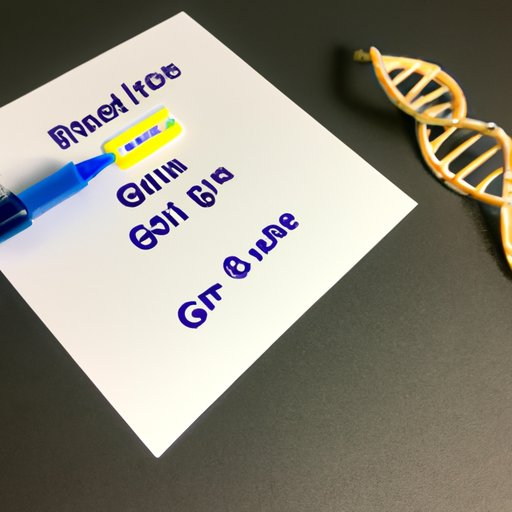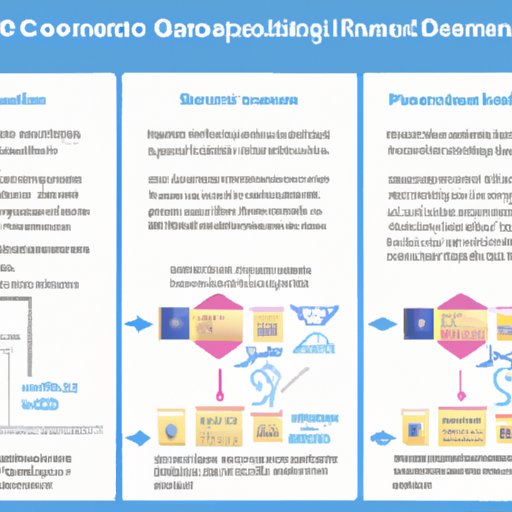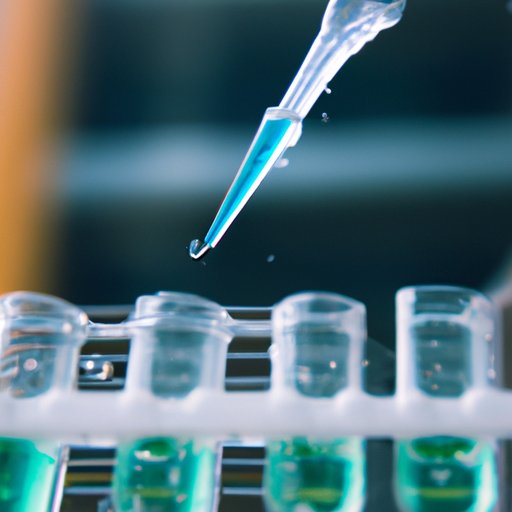Introduction
DNA recombinant technology is a form of genetic engineering that has been gaining increasing attention in recent years. It involves the manipulation of genes to create new combinations of genetic material that would not occur naturally. This technology has been used in a wide range of fields, including agriculture, medicine, and industry, and has had a significant impact on society. In this article, we will explore the basics of DNA recombinant technology, its applications, and its potential impacts on society.

Exploring the Basics of DNA Recombinant Technology
Before exploring the implications of DNA recombinant technology, it is important to understand what it is and how it works. DNA recombinant technology is a form of genetic engineering wherein scientists manipulate the genetic code of an organism in order to produce a desired outcome. This process involves taking pieces of DNA from one organism and inserting them into another organism. The inserted DNA may be from the same species or from a different species altogether.
DNA recombinant technology can be used to modify existing organisms or to create entirely new organisms. In either case, the goal is to create a new combination of genetic material that would not occur naturally. For example, scientists can use DNA recombinant technology to insert a gene from a fish into a tomato plant, creating a tomato plant that is resistant to cold temperatures.
There are several different types of DNA recombinant technology. These include gene cloning, gene therapy, and gene editing. Gene cloning involves taking a piece of DNA from an organism and using it to create multiple copies of the same gene. Gene therapy involves introducing new genes into an organism in order to treat a particular medical condition. Finally, gene editing involves altering the existing genes of an organism in order to modify its characteristics.

A Detailed Guide to DNA Recombinant Technology
Using DNA recombinant technology requires careful planning and execution. The following steps provide a guide to using DNA recombinant technology:
- Identify the gene or genes that you want to work with.
- Isolate the gene or genes from the organism.
- Insert the gene or genes into the new organism.
- Observe the effects of the gene or genes on the new organism.
In addition to these steps, there are several tips to ensure successful use of DNA recombinant technology. First, it is important to use the most up-to-date techniques and technologies available. Second, it is important to have an understanding of the organism’s natural environment and needs. Finally, it is important to have adequate resources and personnel to carry out the experiment.
The Benefits and Risks of Using DNA Recombinant Technology
DNA recombinant technology has both advantages and disadvantages. On the positive side, this technology has the potential to revolutionize medicine, agriculture, and industry. For example, it can be used to develop new treatments for diseases, create more efficient crops, and develop new products and materials. Additionally, DNA recombinant technology has the potential to create more sustainable food sources and improve environmental conditions.
However, there are also risks associated with using DNA recombinant technology. One concern is that by introducing new genes into an organism, unforeseen consequences could occur, such as the creation of new viruses or other unexpected mutations. Additionally, there is a risk that the new organism could escape into the wild and cause unintended harm. Finally, there is a risk that the new organism could become resistant to antibiotics, making them ineffective.

Investigating the Applications of DNA Recombinant Technology
DNA recombinant technology has numerous applications in various fields. In agriculture, this technology has been used to create pest-resistant crops and increase crop yields. In medicine, it has been used to develop treatments for genetic diseases and create vaccines. Finally, in industry, it has been used to produce biodegradable plastics and biofuels.
Examining the Impact of DNA Recombinant Technology on Society
The use of DNA recombinant technology has had a profound impact on society. On the economic front, this technology has created new opportunities for businesses and entrepreneurs. Additionally, it has led to the creation of new jobs and industries. On the social front, this technology has enabled people to access treatments for previously incurable diseases and improve their quality of life.
Finally, on the environmental front, this technology has been used to create more sustainable food sources and reduce pollution. According to a study published in the journal Nature, “Genetically modified crops have been shown to reduce the amount of insecticides and herbicides used, while increasing crop yields.”
Conclusion
DNA recombinant technology has the potential to revolutionize various fields, including agriculture, medicine, and industry. While this technology has numerous benefits, it also has its risks. It is important to consider both the benefits and risks of this technology before utilizing it. Additionally, it is important to consider the impact this technology has on society, both economically and socially.
In conclusion, DNA recombinant technology is a powerful tool that has the potential to bring about significant changes in our world. However, it is important to consider the implications of this technology before utilizing it. Further research should be conducted to better understand the implications of this technology and to ensure its safe and responsible use.
(Note: Is this article not meeting your expectations? Do you have knowledge or insights to share? Unlock new opportunities and expand your reach by joining our authors team. Click Registration to join us and share your expertise with our readers.)
